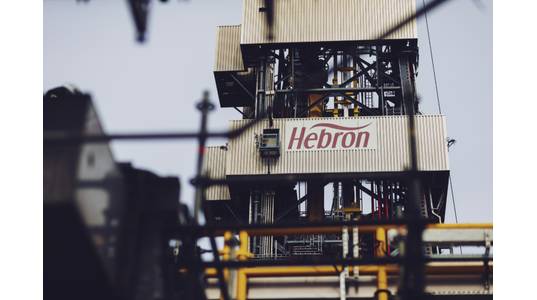
The Canada-Newfoundland and Labrador Offshore Petroleum Board (C-NLOPB) has approved the Development Plan Amendment (DPA) for the Hebron Field.
The Hebron oil field is located offshore Newfoundland and Labrador, Canada, in the Jeanne d'Arc Basin 340 kilometers southeast of St. John's. The field was first discovered in 1980, and is estimated to produce more than 700 million barrels of recoverable resources. The water depth at the Hebron field is 93 meters.
The approval enables ExxonMobil and its partners to develop sands within the Jeanne d’Arc Formation that were not covered in the original Hebron Development Plan, subject to the conditions.
The application was reviewed in the context of the previously completed Canadian Environmental Assessment Act Comprehensive Study of the Hebron Project in 2011 and an Environmental Assessment Amendment in 2017.
The additional development activities do not require changes to the installation, equipment deployment in the field, operations, shipping activities or the extent of safety zones and no new excavated drill centers or drilling installations will be required.
The impacts of the physical presence in the environment associated with the amendment fall within those assessed in the above-noted Comprehensive Study.
Since the start of production in 2017, ExxonMobil has implemented new technology and several operational changes to identify, mitigate and reduce GHG emissions at the Hebron Field.
GHG emissions are expected to remain below the emissions estimated in the Comprehensive Study Report and approved in the original Development Plan.
During review of the application, C-NLOPB staff completed a reassessment of the most likely recoverable oil (Estimated Ultimate Recovery [EUR]) and contingent gas estimates for the Jeanne d’Arc Formation. The Proven and Probable (2P) EUR for the Jeanne d’Arc Formation are now 165 million barrels, up from 132 million barrels in 2012.
C-NLOPB staff also reassessed the EUR and contingent gas estimates for Pool 1 and the Hibernia Formation for the Hebron Field, following significant learnings from drilling in the Hibernia Formation and production from Pool 1.
The Proven and Probable (2P) EUR for Pool 1 is 560 million barrels and for Hibernia is 58.9 million barrels (up from 15 million barrels in 2012).
Since 2019, solid execution of ExxonMobil’s strategy has increased the earnings power of the corporation, adding about $10 billion to its annual earnings and cash flow at a real Brent price of $60 per barrel. These improvements provide a strong foundation to further grow annual earnings and cash flow by $14 billion from year-end 2023 through 2027, says the company.
Upstream earnings potential is on track to more than double by 2027 versus 2019, resulting from investments in high-return, low-cost-of-supply projects. Over the next five years, approximately 90% of the company’s planned upstream capital investments in new oil and flowing gas production are expected to generate returns greater than 10% at a Brent price of $35/bbl. The company says it has made good progress executing its plan to reduce upstream operated GHG emissions intensity by 40% to 50% by 2030, compared with 2016 levels, having already achieved approximately half of this planned reduction.